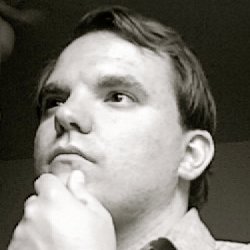
On an overcast day, CSCW convened for the second day of presentations (for previous coverage see Clay Shirky: Doing work, or Doing Work?; Time Travel is Now Possible; Death and the Digital Age; and Terms of Service, Ethics and Bias). This post will give a summary of one paper each from sessions on Groupware Technologies, the experimental CSCW Horizons, and Everyday Healthcare.
The papers I have chosen to focus on from each of these sessions revisit longstanding problems in computer science and HCI, ranging from what to do when collaborators lose a network connection to examining the traditionally qualitative examination of situated action through a quantitative lens in the healthcare system. The highlighted papers were also selected to give you a taste of the diversity of the papers presented from the system development side to the purely social, and a piece that seems to fit in between.
While the problem of reconnecting systems when bumps in the network connection occur has been examined by others, the team of Carl Gutwin (University of Saskatchewan), T.C Nicholas Graham (Queen’s University), Christopher Wolfe (Queen’s University), Nelson Wong (University of Saskatchewan) , and Brian de Alwis (University of Saskatchewan) sought to find a solution to the problem of how to handle the disconnect users experience when there is a loss of temporal synchronization due to network issues. Their solution, disco framework, uses a series of sender and receiver side plug-ins to handle resynchronization in ways that scale (using a power of 10 filter) based on the amount of time the users have been operating unintentionally asynchronously.
Some of the solutions they discussed were sending all cached points in a drawing application when the disconnect was for less than a second or sending an entire line segment if a minute had passed and it was clear that the user had drawn a line. Additionally, in a game of tank, AI might take over a disconnected player and take actions based on what it predicts the user would have done until the individuals are reconnected. Given the limited space, I probably am not giving the intricacies of this paper full justice, but I highly recommend reading it once it becomes available in the ACM Digital Library.
CSCW Horizons represents an experimental session trying to encourage more interactive presentations around controversial topics in a way reminiscent to alt.chi. The first half of the session was devoted to a contest with a $20 Starbucks gift card at stake; Umar Farooq (Microsoft Research) and Andrew Sempere (IBM) faced off to try to define the inverse of CSCW (WCSC) while bringing up a topic of interest to the community. Andrew began, with guest support from Jonathon Grudin, by presenting “What Changes Since Computation? A Design Manifesto for 2010.” In the talk he made the case that organizations practice “compliance theater” by which he meant that organizations set up these barriers that employees must comply with, but employees often must violate these rules in order to accomplish their daily work. As he stated he would be doing at the beginning of his talk, Andrew sowed the seeds for his own unraveling of his manifesto by ending the talk with a table comparing pre-computational culture vs. computational culture, which an audience member stated was a “very conformist way of being anti-conformist.”
Umar Farooq then presented his case for “Why Confusion Seeds Creativity?” in which the focus was on the importance of liminality (a term from the performing arts meaning being on a threshold) in creative thinking. By this he meant that creativity occurs neither in the divergence of ideas nor in the convergence of ideas that forms the initial solution, but in the space in between the divergence and convergence of ideas, often with ideas that originally converged, but then people go back and reexamine the divergent ideas and reframe the convergent idea. Umar ultimately won the contest by a narrow margin of victory. Congratulations, Umar!
The last session I attended was Everyday Healthcare in which two of the three papers presented were the results of observations of healthcare workers going about their daily business. Thus the third paper stood out as being a slightly different way of looking at things. The researchers, Jakob Bardram (IT University of Copenhagen) and Thomas Riisgaard Hansen (Cetrea A/S), installed a software system in a hospital that aided in the planning activities of healthcare workers and they used it to try to quantify the percentage of plans that were altered. As the researchers stated, this was a first attempt at trying to quantify situated action which has previously only been studied through the lens of ethnomethodology (although, as the researchers noted, the plans and situated action they are discussing differs greatly from that of the situated action originally conceived by Lucy Suchman).
The researchers found a very high percentage (67%) of elective surgeries that deviated from the schedule (running longer or shorter) by at least thirty minutes. In addition, during the period of their study they found that there is almost an even split between studies planned ahead of time (56%) and those that were planned ad hoc (44%) due to acute problems that required immediate surgery. Ultimately, this led to only 18% of all surgeries at the hospital being enacted as planned.
Aside from lending quantitative evidence to situated action taking place in healthcare, the researchers also contributed design contributions through accompanying qualitative interviews with workers; they discovered healthcare workers want a solution that will allow them to easily puzzle over schedules by continuously allowing easy plan updates and easy examination of possible plans.
Tomorrow is the last day of CSCW, and I hope to provide one last update although it will feature only one paper and some closing impressions on the conference.
While reading interests probably will not be shared, Mike can be followed on twitter @mikeoren.



Join the Discussion (0)
Become a Member or Sign In to Post a Comment